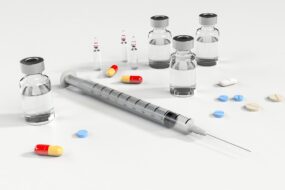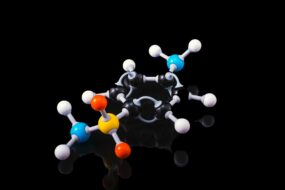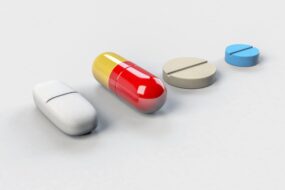Gentamicin is a systemically administered aminoglycoside. It is obtained from Micromonospora purpurea. It surpasses streptomycin because of its higher potency and a broader spectrum of activity.
Mechanism of action.
- Irreversibly binds to 30s subunit of bacterial ribosomes blocking recognition during protein synthesis and inhibiting growth.
Indication.
- Aerobic gram-negative bacilli, including E. coli, Klebsiella pneumoniae, Enterobacter, H. influenza and Pseudomonas aeruginosa.
- Many strains of Brucella, Campylobacter, Citrobacter, Francisella and Yersinia.
- A limited number of gram-positive bacteria, including; S.aureus, Strep. faecalis and some Listeria,
- Strep. pyogenes, Strep. pneumoniae and enterococci are usually insensitive.
- Gentamicin is ineffective against Mycobacterium tuberculosis and other mycobacteria.
Resistance.
- Cross-resistance to tobramycin and sisomicin.
- It synergises with β-lactam antibiotics, especially against Enterococcus (endocarditis) and Pseudomonas (meningitis).
Adverse effects.
- Vestibular and auditory damage.
- Hypomagnesaemia on prolonged therapy.
- Antibiotic-associated colitis and stomatitis.
- Nephrotoxicity.
Drug interactions.
- Nephrotoxic drugs, including other aminoglycosides, cephalosporins, and vancomycin, increase the risk of toxicity of the drug when administered together.
- Caution when using other potentially ototoxic drugs like vancomycin and minocycline due to toxicity.
Dosage.
- Dose: 3–5 mg/kg/day (single dose or divided into three doses) intramuscular or in an intra venous line over 30–60 min.
- GARAMYCIN, GENTASPORIN, GENTICYN 20, 60, 80, 240 mg per vial injection also 0.3% eye/ear drops, 0.1% skin cream.












